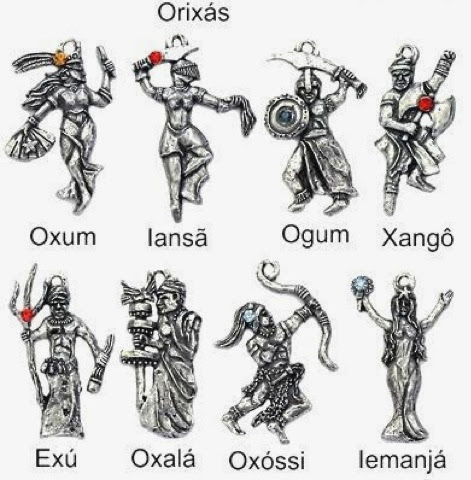The religion of Candomblé is practiced by two million Brazilians today. Derived from the Yoruba people of West Africa, Candomblé appeared in the 1500’s when Africans were forced to leave their country and shipped to Brazil to live as slaves. To preserve their African faith, the slaves of Bahia developed a secretive religion that centered on the Orixás, or spirits of their homeland. These Orixás, sixteen in total disguised as Catholic Saints, became a way for these Africans to stay true to the rituals and practices of their faith.
Although some people of Candomblé were willing to recognize Christ, the church refused to accept any signs of African traditions. According to the Christian belief system, the Candomblé practices—which revolved around natural elements—came too close to paganism and witchcraft. As a result, the slaves began to hide their African icons deep within the ornate and intricate Christ alters, peppering churches with ornaments of hope for souls that were fearful of fading. Even after the abolishment of slavery, many people of Candomblé were afraid to worship freely, so they continued to pray solely to Catholic Saints.
Each deity in the Candomblé religion signifies an element of the natural world and has assigned colors and favorite types of food. The people of Candomblé revolve their ceremonies and worship around these Orixás and believe in the power that the chosen Orixá passes on to the human. Each Orixá is said to choose its believer and finds a way to communicate that he or she is the spirit of this individual and is able to wear the appropriate beads and has the right spirit to worship. Each color represents a different natural force. In this way, the Candomblé religion seeks harmony with nature, using its Orixás to represent, instill and spread the power of the sun, wind, fire, earth, and water.


No comments:
Post a Comment